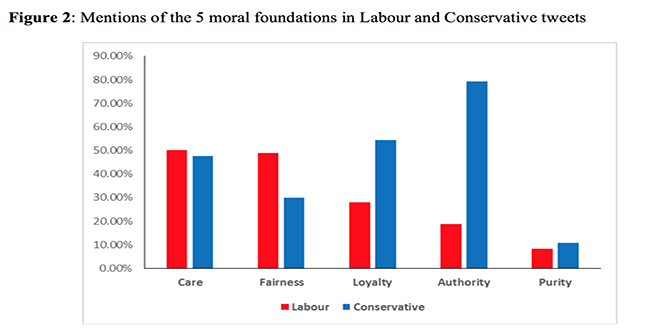 Social inequality in housing is a pressing issue that takes on a material dimension. To start tackling it, we need to rethink how we talk about housing and design, writes Mona Sloane. She explains how under current processes, attempts to improve the building stock often end up perpetuating wider social inequality.
Social inequality in housing is a pressing issue that takes on a material dimension. To start tackling it, we need to rethink how we talk about housing and design, writes Mona Sloane. She explains how under current processes, attempts to improve the building stock often end up perpetuating wider social inequality.
The tragedy of Grenfell Tower continues to expose the paralysing inequality that beleaguers much of London’s social housing. This inequality is not specific to the Grenfell Tower block. It has a very complex social reality and takes on a tangible form: many social housing estates are characterised by poor material quality, despite significant improvements made in response to the government’s Decent Homes Standard programme.
In 2013, in London alone there were still over 91,000 council and housing association homes below the standard. Compared to the 260,000 homes in poor condition that were counted in 2005, this is an improvement. But this positive trend is not so clear if one factors in the many council homes that have been sold under the Right To Buy Scheme, or the sell-off of large estates in London to private developers, such as Elephant and Castle’s Heygate Estate, as part of highly contested strategies for urban renewal.
In 2015, the overwhelming majority of new homes were built by private builders (16,490 completions) with housing associations significantly legging behind (7,760 completions) and councils almost not building at all (130 completions). Significant cuts to government spending on housing has led to notoriously under-funded local authorities who are not only deprived of their ability to build anew, but also increasingly lack the resources to look after the remaining social housing stock.
This structural neglect often sits opposite the solid social fabric of the existing blocks: social housing residents often live long-term on their estate and form tightly-knit communities that self-organise and are able to articulate their own needs. Estates are places where people care deeply about each other and their homes, where children still play outside freely, sometimes even after dusk. If you strip this image of the poor housing quality, then this may well be the dream of any mayor. Yet, processes that seek to improve the building stock actually perpetuate wider social inequality because of the material politics of design and refurbishment projects. We can break this down into three issues:
Hierarchical agenda setting
Design problems are dictated from the top down. Design fundamentally is about problem-solving, not only conceptually, but also pragmatically: all design or refurbishment activity responds to a pre-defined problem. This problem tends to be dictated from above without much, or any, engagement of users or communities on whose behalf problems are solved. Here, priorities of those in power overrule the priorities of the ones who have to live with ‘the solution’. For example, landlords may choose to improve walkways to avoid liability in case of residents tripping while indoor repairs lag behind.
Elite politics of access
This imbalance of priorities is amplified by the politics of resident engagement in design/building projects. Usually, ‘experts’ form an elite group that defines problems and delivers solutions. These are then, at best, presented to users in so-called consultations. A critique of these solutions will usually only be heard if residents can position themselves as experts in the eyes of project leaders, or if they can build up political pressures and/or have some sort of financial leverage to intervene into set timelines and budgets. This means that the problems which are heard the least tend to be the problems of the most vulnerable groups.
Cost-engineering of materials
Profit-driven and deregulated material supply processes amplify this social inequality in very tangible ways. Here, complex contractual agreements and responsibilities in building projects allow for building materials to be cost-engineered down: contractors often can shave off profit by providing cheaper materials if these have not been sufficiently specified or are only very vaguely regulated.
In the social housing context, this is underpinned by vague definitions of the ‘minimum standard of decency’ in the Decent Homes Standard whereby social housing needs to be ‘free of health and safety hazards’, be in a ‘reasonable state of repair’, have ‘have reasonably modern kitchens, bathrooms and boilers’ and be ‘reasonably insulated’. In concrete terms, this means that a building contract may only specify ‘a wall’ which means that it can be plastered (cheap) or made with brick (expensive) – usually, in contractual terms it remains a wall. This neo-liberal template reveals that value often means ‘value for money’, not ‘value for people’.
These issues are even more pressing in dense urban environments like London where the high price of scarce land dominates general frameworks of housing accessibility and affordability. Social inequality in housing is one, if not the, most pressing issue of our time. To start tackling this, we have to talk about housing and design in very pragmatic and tangible ways, not least because design and housing inequality take on a very material dimension. This begins with more strict building standards and protocols, especially with regards to material quality. It can continue with alternative valuations of land that may change perceptions of what/who housing is for and be aided by introducing more equitable forms of design participation which both communities and design professionals have long been ready for – government and local authorities have to follow as a matter of urgency.
_____
 Mona Sloane (@mona_sloane) is a PhD Researcher in the Department of Sociology at the LSE.
Mona Sloane (@mona_sloane) is a PhD Researcher in the Department of Sociology at the LSE.







